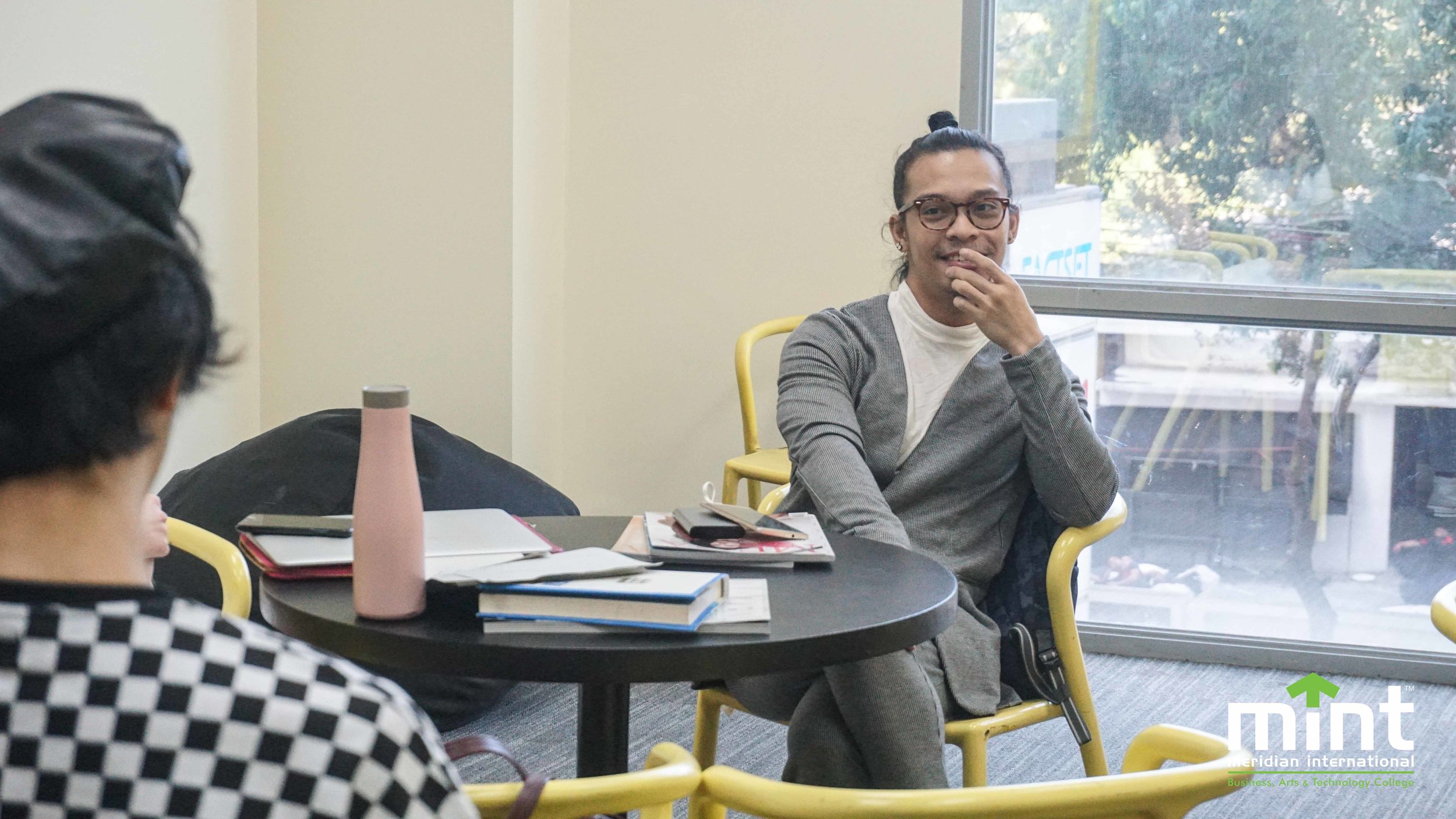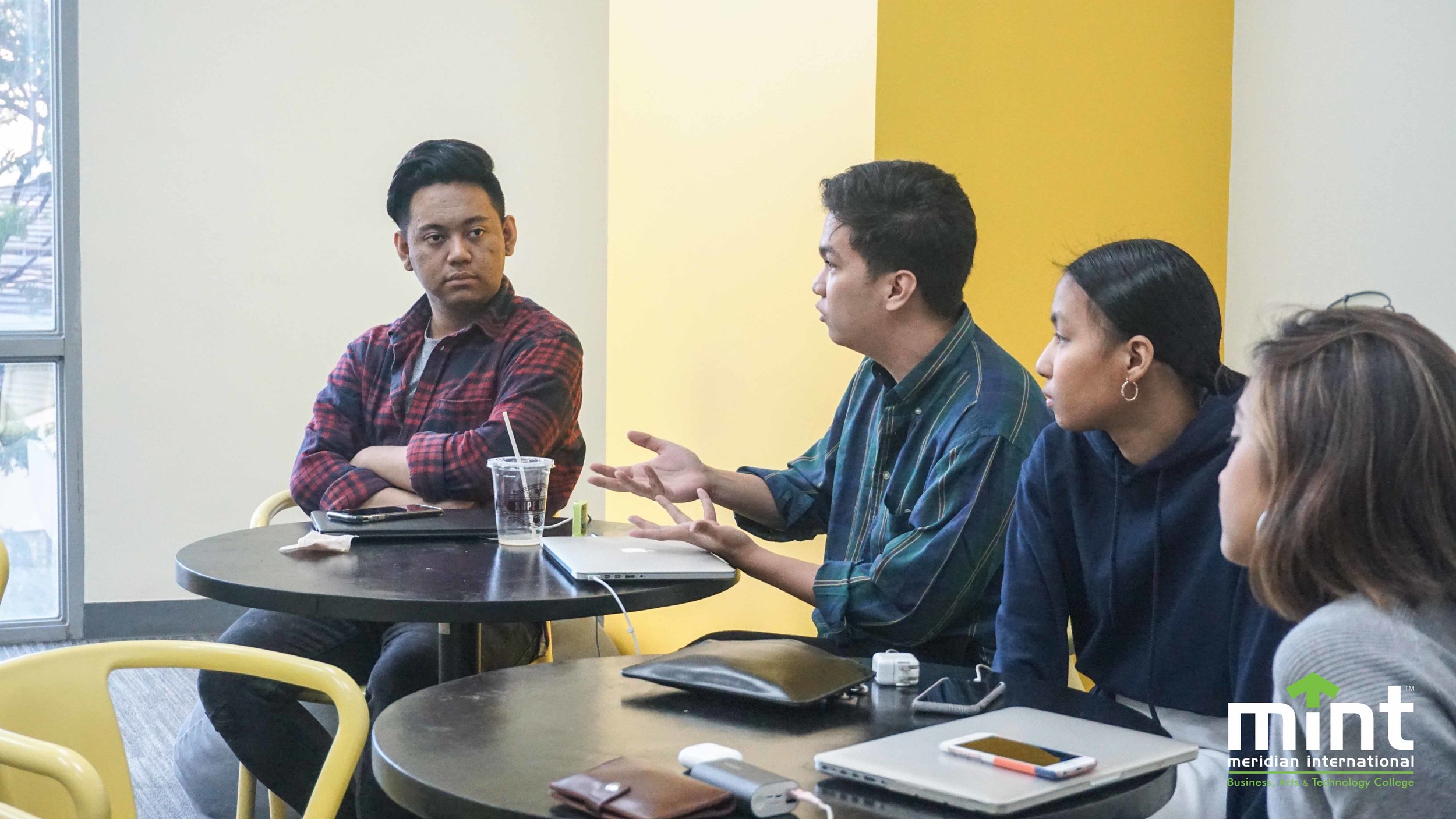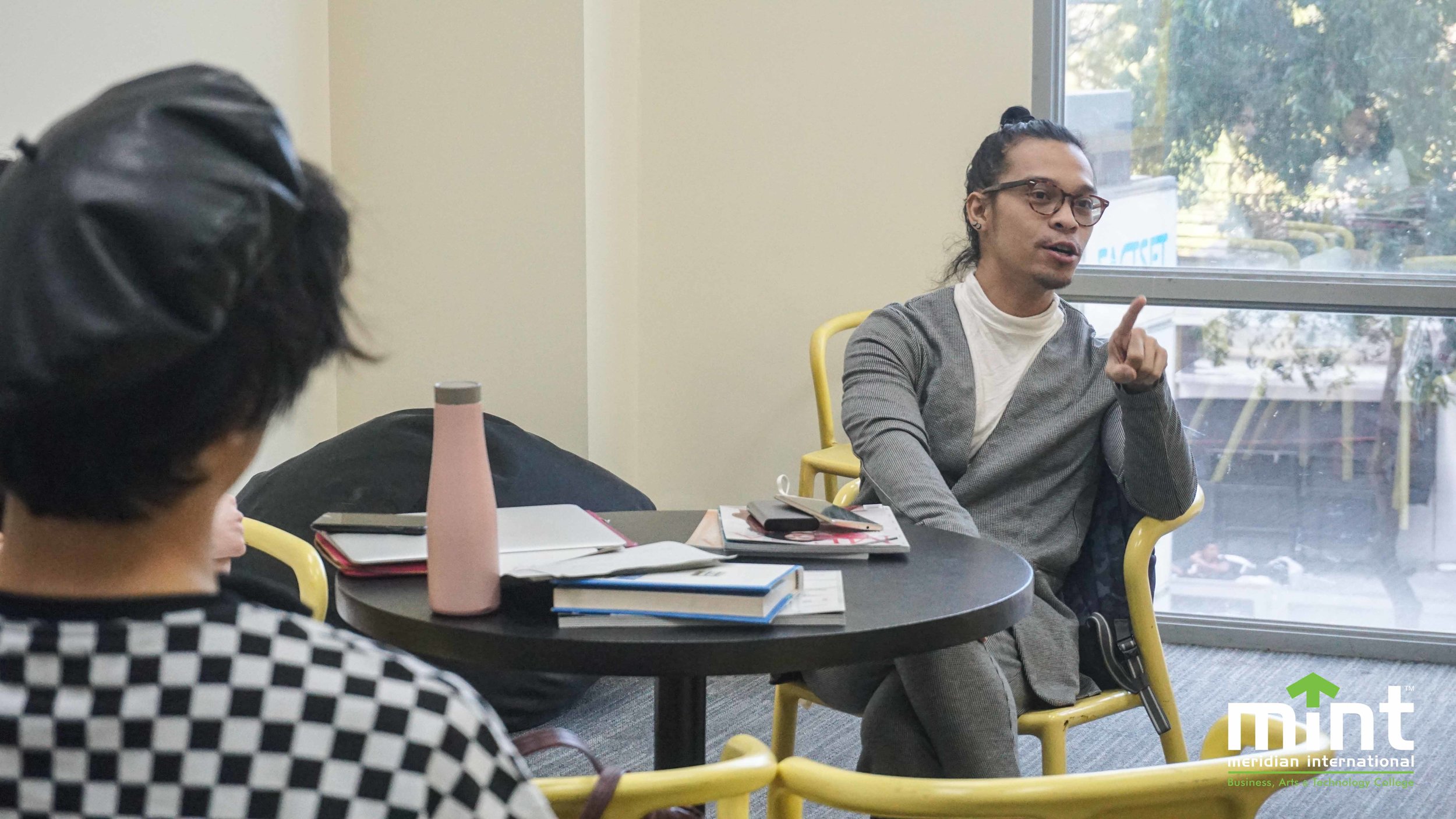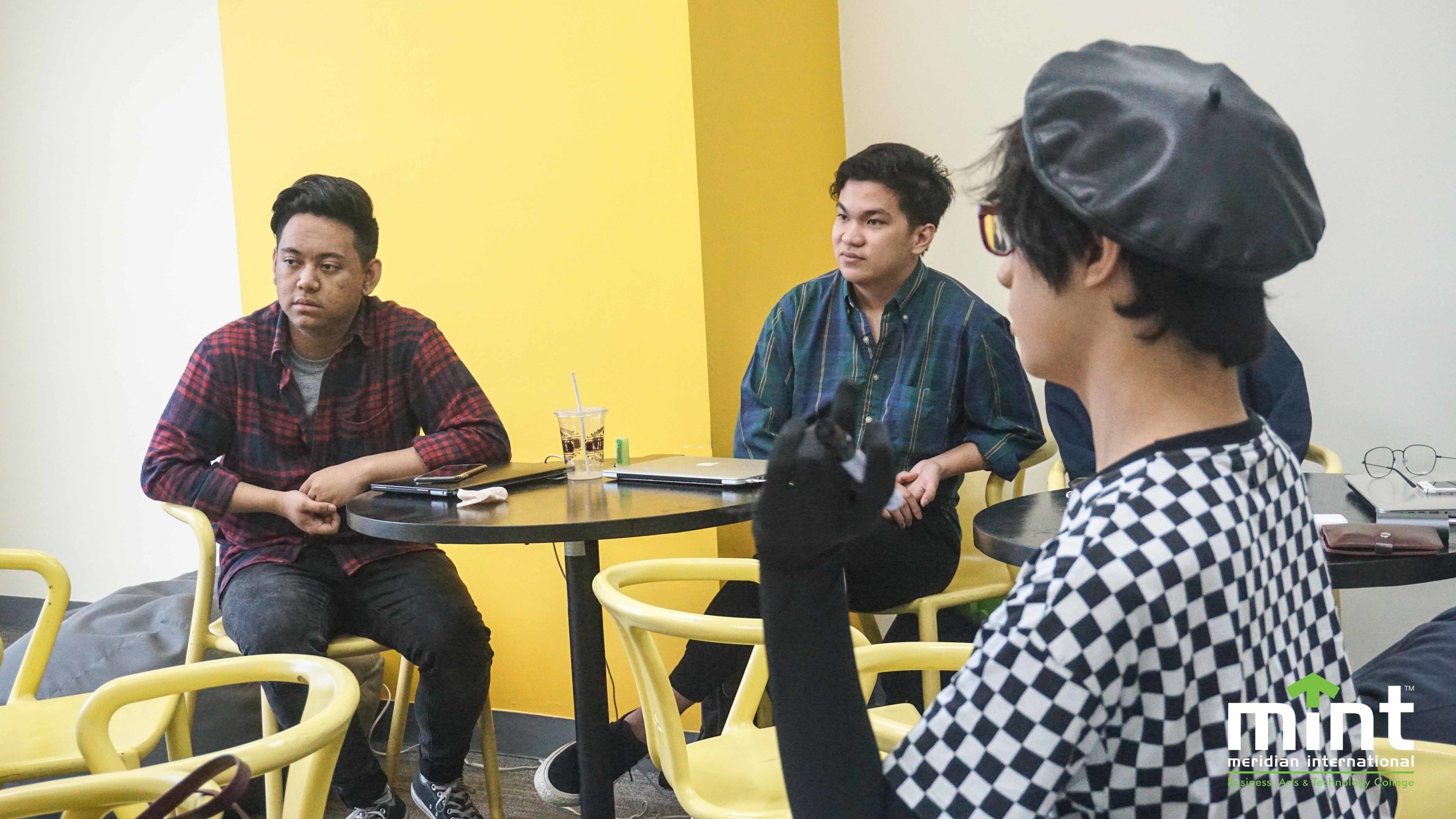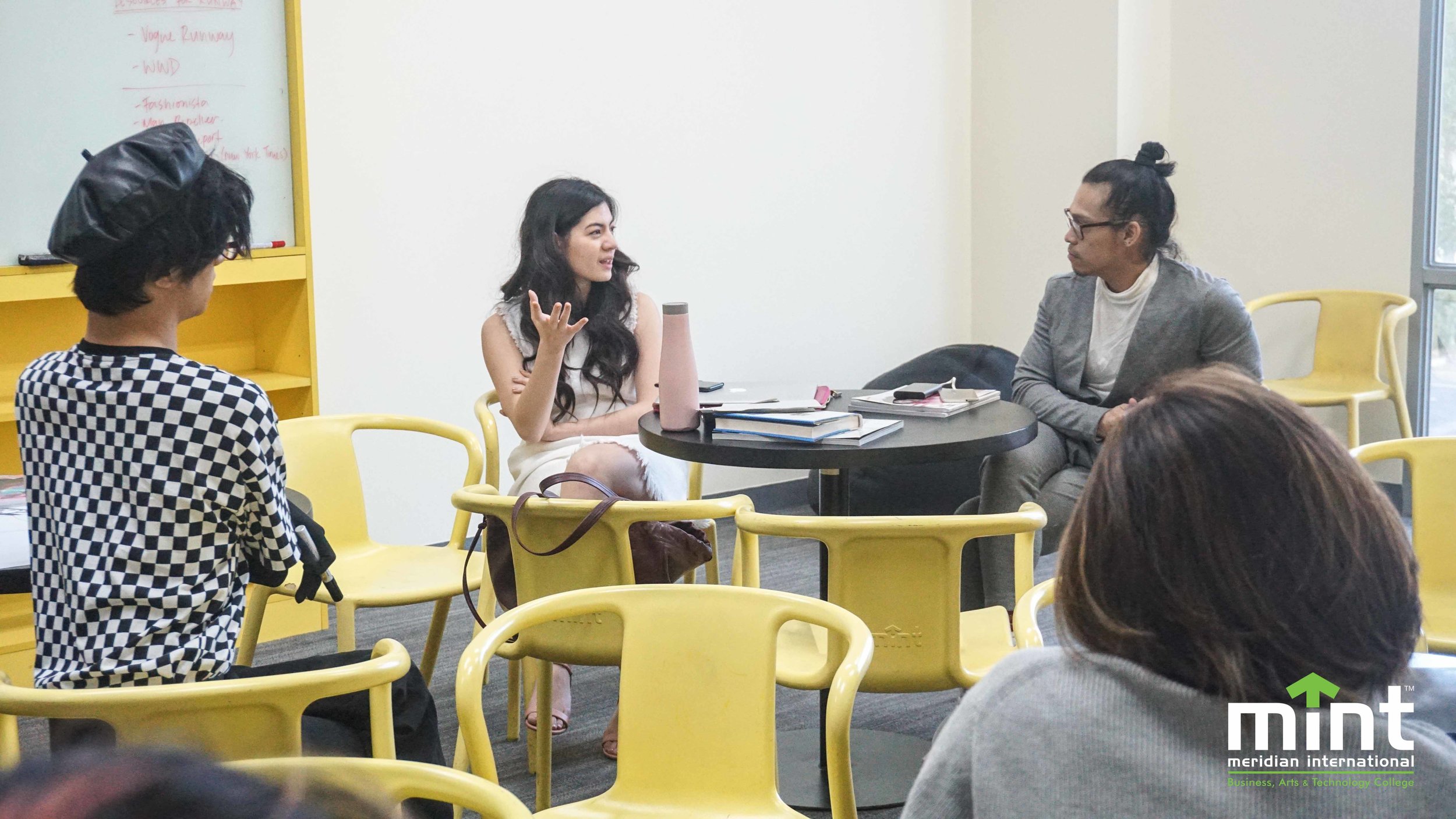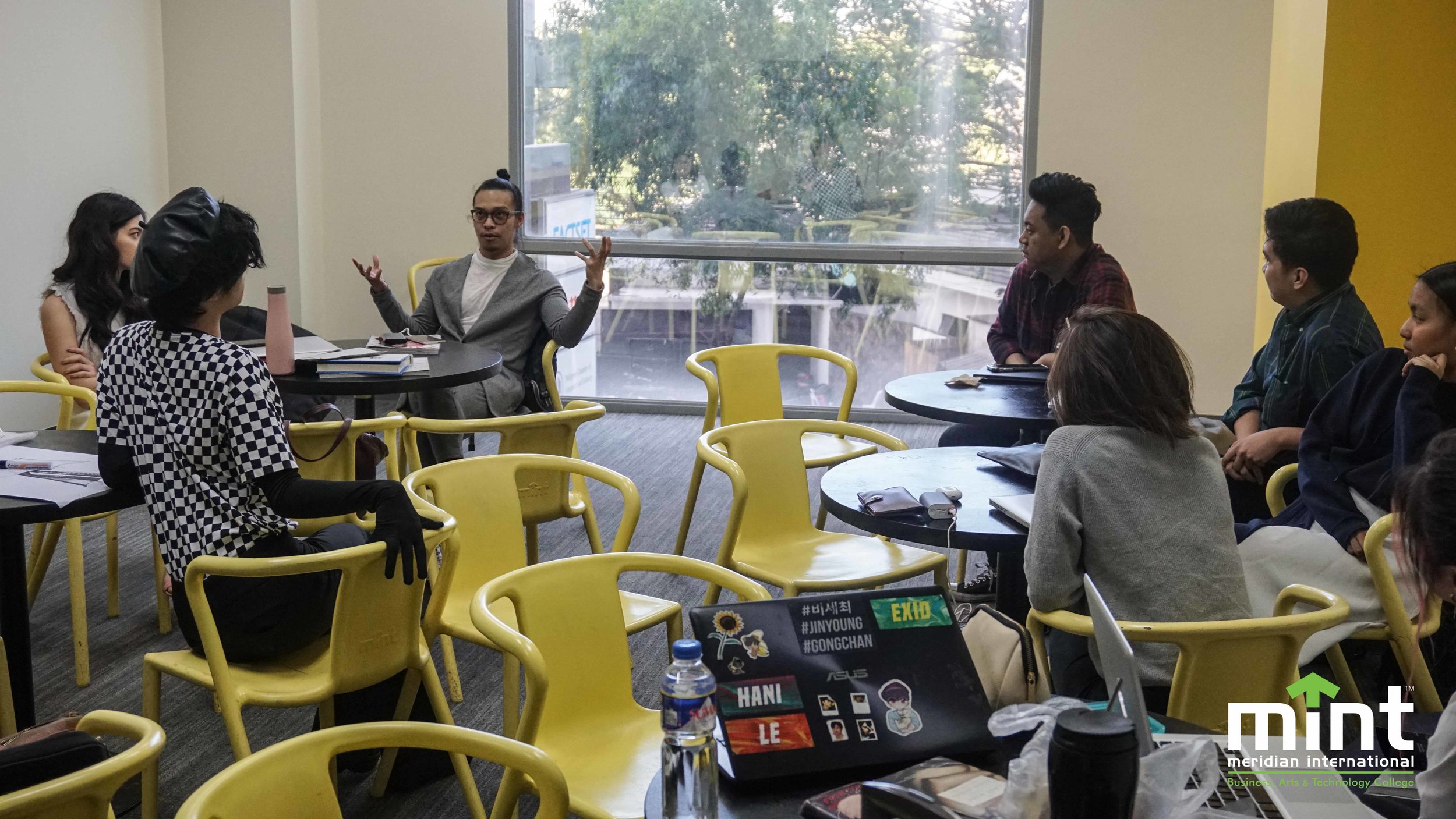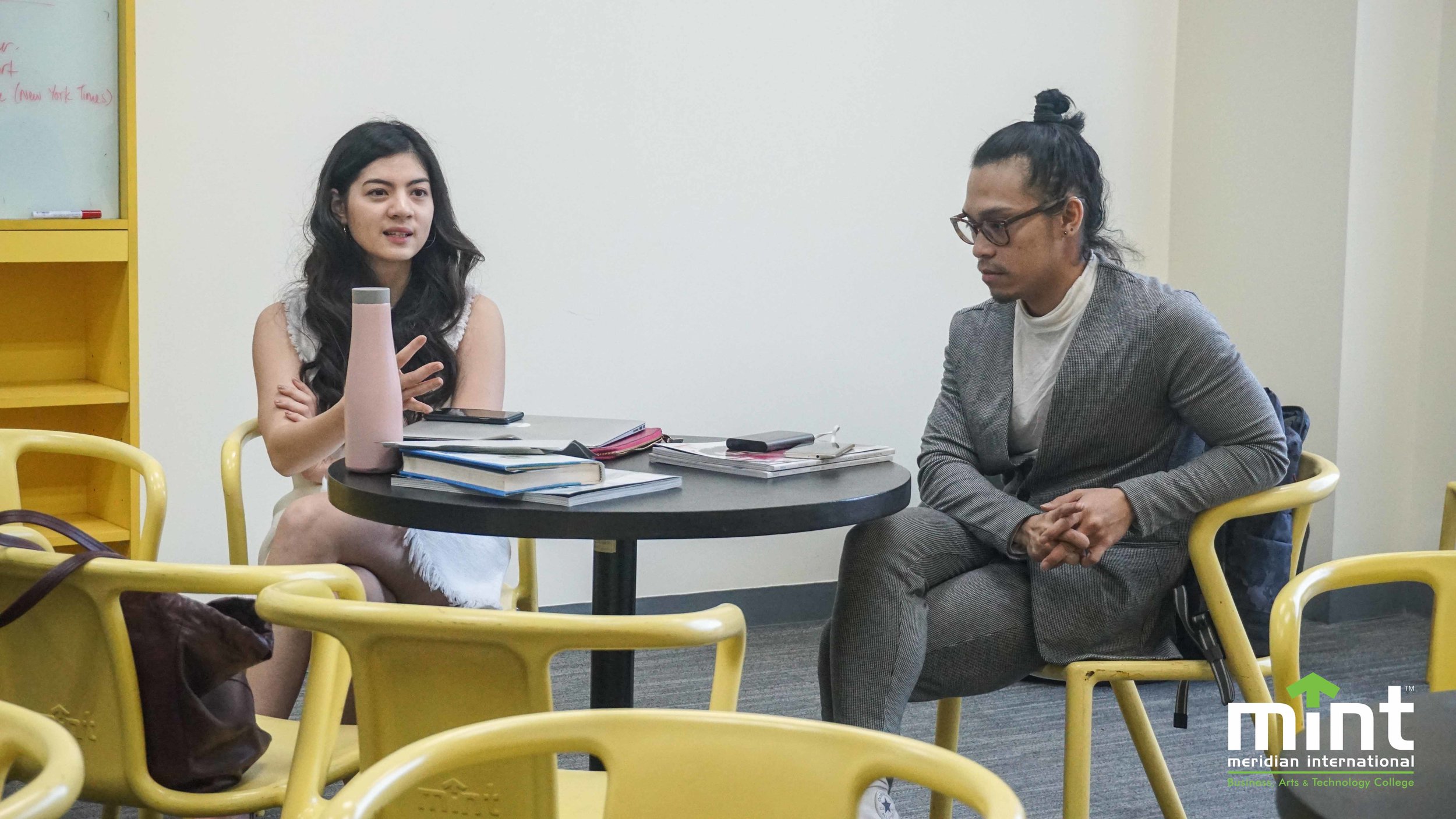Photos by Igo Eusebio
“What about it?”
This is Angelo Ramirez de Cartagena’s guiding mantra as MEGA magazine’s associate editor. He asks this whenever he and the other editors decide which stories to put out for a certain issue. “When you’re young, you’ll think that the pretty things about this job are it. But as you grow older, you’ll start to ask, ‘what now?’ ‘Is there something else?’,” he said, explaining how the allure of the fashion industry sometimes mislead young and aspiring creatives. Fashion is more than pretty clothes and high-end brands, he believes.
In the afternoon of February 20, he sat down with MINT Fashion students to talk about the ins and outs of the fashion magazine industry—drawing from his experience as a former stylist, then an editor of the country’s leading fashion magazine, Mega.
In his lecture, De Cartagena discussed various topics such as the transition of fashion magazines from print to online, the evolution of the glossies’ storyboard, the usual day of a fashion journalist, and the power of the written word. He shared his experiences as examples to give the students a glimpse of how the industry works through the eyes of someone wielding a pen to write words instead of sketching dresses.
He has written Mega’s cover stories, did personality profiles, and reviews. But he said his favorite assignments involve the ‘meatier topics’. “I like writing think pieces, op-eds, stories that involve social issues like women’s movement, LGBTQ issues [...],” he shares. “The fashion stories would never go away. But, why write about another handbag when you can keep the conversation going? I’m sure your readers would like to know more about it too.”
He emphasized that fashion magazines nowadays are also becoming more than mere ‘look books’. He shares that magazines are now giving light to socially-relevant topics that goes beneath the surface on discussions about beauty and style. “Everyone, everything has a story to tell. It’s my job to bring it to light,” he says.
“It’s a weird kind of deception,” De Cartagena begins, “yet a simple kind. It would seem you’re just talking about fashion or selling beauty. But then, as you flip through the pages, you’d be reading more about opinions—on beauty standards, on how we consume fashion—stories have become more personal, intrinsic.”
He also pointed out that the glamorous visual appeal of fashion actually helps these topics to be brought up, and in a sense, also revamps people’s opinion about fashion being superficial.
His job includes talking to A-listers and for De Cartagena, the best interviews for him are the ones he doesn’t have to prepare for. He adds that the celebrities he usually talks to had been repeatedly interviewed with the same questions, so he’d rather not prepare beforehand to engage his subject to share more.
“There are things people wish to hear, and those are the things that might come out from them. To add, those things are also what they wish to tell to everyone. It’s my job to get them heard.” For him, the printed word has this “sense of permanence that is needed to keep a conversation going.”
For MINT Fashion student Caryll Cabuhat, his lecture made her realize that working in the fashion industry isn’t all about exclusive access to high-profile people and events only, but also being able to see the worth at every piece of clothing, every celebrity met, and to realize what the featured brands stand for.
“He also helped us decide which career path in the fashion industry we would like to pursue, and motivated us to constantly intern, work, and continue to produce ideas because that is what will keep us going,” she said. W


